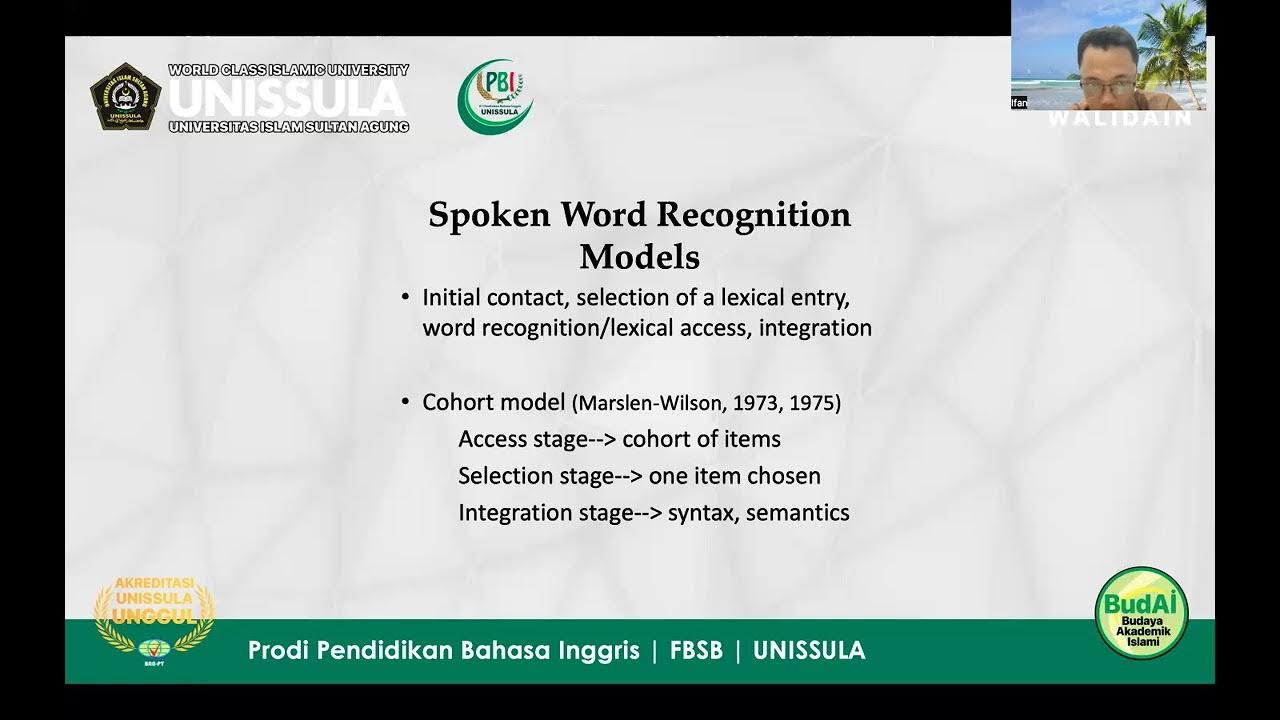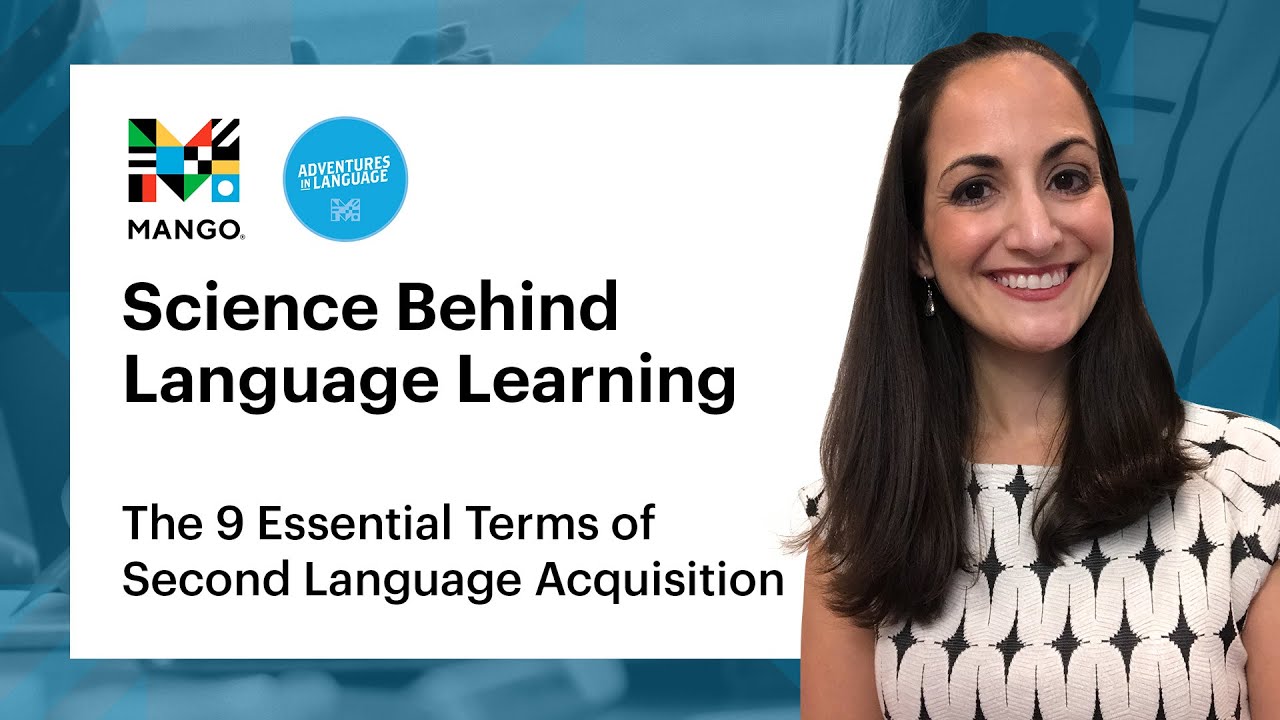The difference and similarities between first language and second language acquisition
Summary
TLDRIn this video, the hosts discuss the differences and similarities between first and second language acquisition. First language acquisition is a natural, unconscious process that children undergo to learn their native language, typically reaching full proficiency by age six. Stages include phoneme reception, babbling, and telegraphic speech. Factors influencing this process include age, personality, and motivation. Second language acquisition, in contrast, is a more conscious effort often undertaken later in life, with stages such as the silent period, early production, and advanced fluency. Both processes are influenced by universal grammar, follow predictable stages, utilize context, and are affected by age.
Takeaways
- 🌱 First language acquisition is a natural process that children undergo to learn their native language without conscious effort, typically reaching full proficiency by age six.
- 📚 The difference between learning and acquisition is that learning is a conscious acceptance of knowledge about a language, while acquisition is a subconscious process.
- 👶 Stages of first language acquisition include phoneme reception, cooing, babbling, and the development of telegraphic speech, each with distinct characteristics and timeframes.
- 🧠 Factors influencing first language acquisition include age, personality, and motivation, with young children being more receptive to language learning.
- 🗣️ Noam Chomsky's quote emphasizes that acquiring a first language is inevitable for a healthy child, much like walking.
- 🌐 Second language acquisition involves learning additional languages beyond one's native tongue and typically requires more conscious effort than first language acquisition.
- 🔍 The stages of second language acquisition include the silent period, early production, speech emergence, intermediate fluency, and advanced fluency, each with its own milestones and challenges.
- 👶👵 Age is a significant factor in second language acquisition, with children under ten generally adapting more easily to new languages.
- 🤗 Personality plays a role in language learning, with extroverted learners often making faster progress due to their willingness to practice and take risks.
- 💡 Motivation is key for second language learners; those who enjoy the process and take pride in their progress tend to achieve higher proficiency.
- 🔄 Both first and second language acquisition share similarities such as the influence of universal grammar, predictable stages, the use of context, and the importance of age in determining proficiency.
Q & A
What is the difference between 'learning' and 'acquisition' in the context of language development?
-In the context of language development, 'learning' refers to the conscious acceptance of knowledge about a language, such as grammar or style, which is typically taught by a teacher. 'Acquisition,' on the other hand, involves the subconscious acceptance of knowledge where information is stored in the brain through the use of communication without the need for a teacher.
How does first language acquisition occur in children?
-First language acquisition is a natural process that doesn't require any conscious effort. It occurs without the need for a structured approach, and children typically achieve 100 percent proficiency within six years from birth.
What are the stages of first language acquisition as described in the script?
-The stages of first language acquisition include phoneme reception (1-4 months), cooing (4-6 months), babbling (6-8 months), the emergence of first words (12-16 months), and the telegraphic speech stage (around 2 years old).
What factors influence first language acquisition in children?
-Factors influencing first language acquisition include age, personality, and motivation. Younger children find it easier to acquire language, and their personality, such as being extroverted, can affect their willingness to practice speaking. Motivation to communicate and express themselves also plays a significant role.
What does Noam Chomsky's quote imply about first language acquisition in children?
-Noam Chomsky's quote suggests that acquiring a first language at a young age is inevitable for a healthy baby, just as walking is. It implies that children are naturally designed to learn language, and it's nearly impossible to prevent them from doing so.
How is second language acquisition different from first language acquisition?
-Second language acquisition requires more conscious effort and often occurs later in life. It builds upon the foundation of the first language and can be more rapid but also more challenging due to the influence of the native language.
What are the stages of second language acquisition mentioned in the script?
-The stages of second language acquisition include the silent period (pre-production), early production, speech emergence, intermediate fluency, and advanced fluency.
How does age affect second language acquisition?
-Age plays a significant role in second language acquisition. Younger learners under the age of 10 find it easier to adapt to the new language, while older learners may face more challenges.
What similarities exist between first and second language acquisition?
-Both first and second language acquisition involve the influence of universal grammar, predictable stages with a particular structure, the use of context, and the impact of age on proficiency.
How does personality affect an individual's progress in second language acquisition?
-Introverted learners may make slower progress in second language acquisition, especially in developing oral skills, while extroverted learners are more likely to take risks and practice more, leading to faster progress.
What is the role of motivation in second language acquisition?
-Motivation plays a crucial role in second language acquisition. Students who enjoy language learning and take pride in their progress tend to perform better than those who lack motivation.
Outlines

This section is available to paid users only. Please upgrade to access this part.
Upgrade NowMindmap

This section is available to paid users only. Please upgrade to access this part.
Upgrade NowKeywords

This section is available to paid users only. Please upgrade to access this part.
Upgrade NowHighlights

This section is available to paid users only. Please upgrade to access this part.
Upgrade NowTranscripts

This section is available to paid users only. Please upgrade to access this part.
Upgrade NowBrowse More Related Video

TEAL_2 Understanding Language Acquisition

FOCUS ON PROCESS: HOW CHILDREN ACQUIRE LANGUAGE (INITIAL LISTENING)

Considerations in Language Acquisition

Individual differences in SLA (aptitude, motivation, & anxiety in second language acquisition)

Language Registers (BICS/CALP)

The 9 Essential Terms of Second Language Acquisition | Science Behind Language Learning
5.0 / 5 (0 votes)